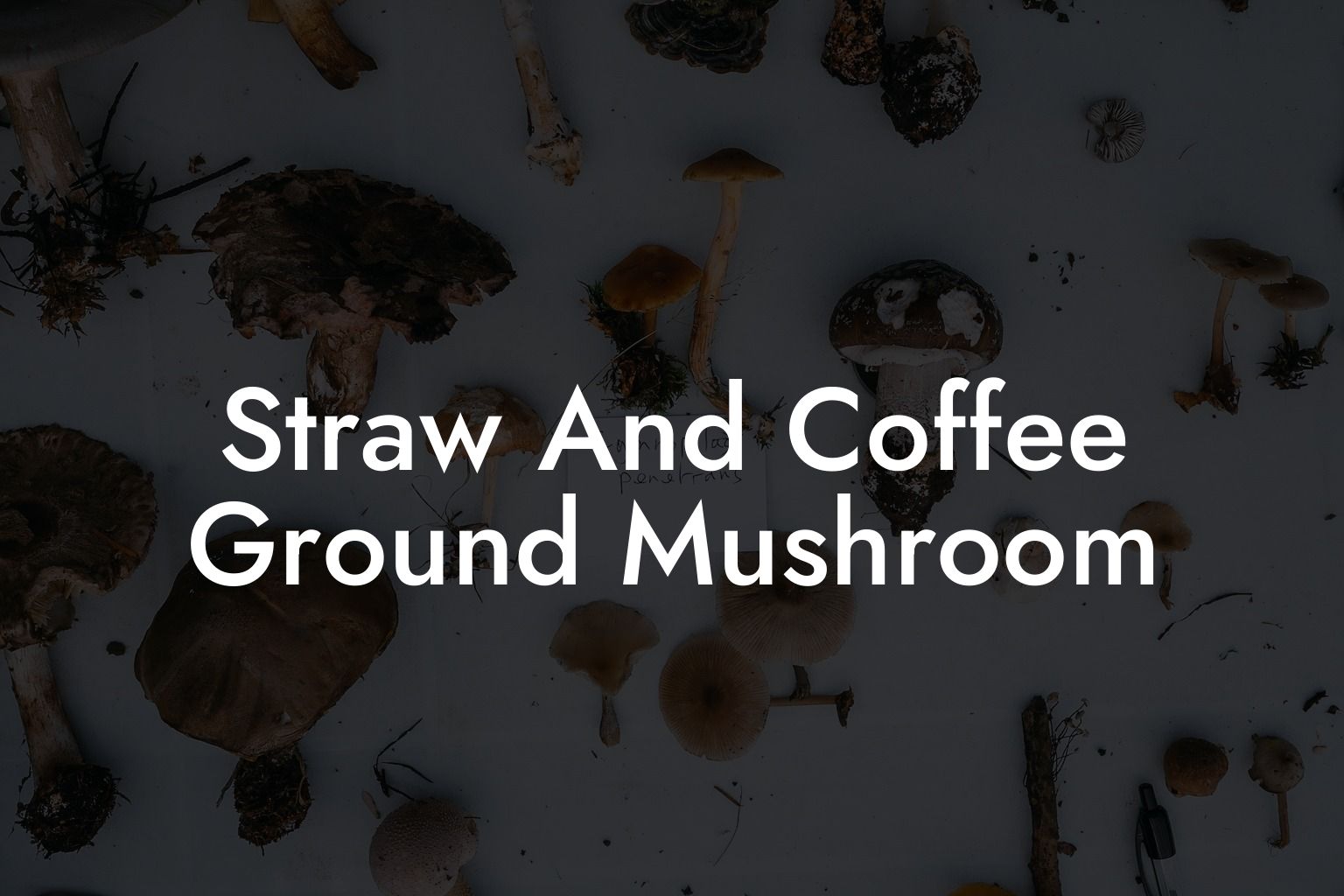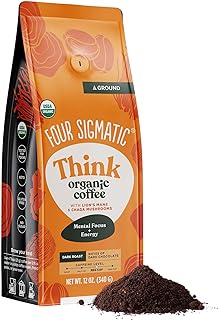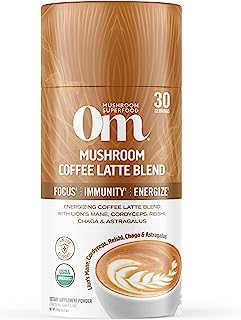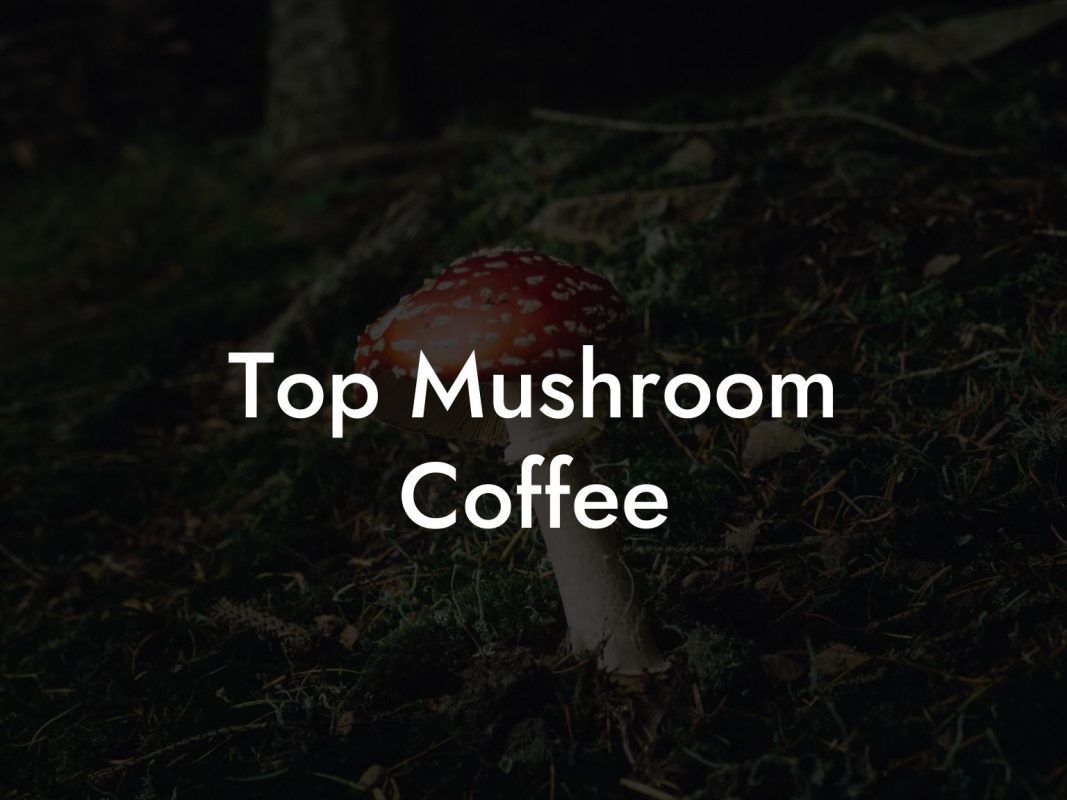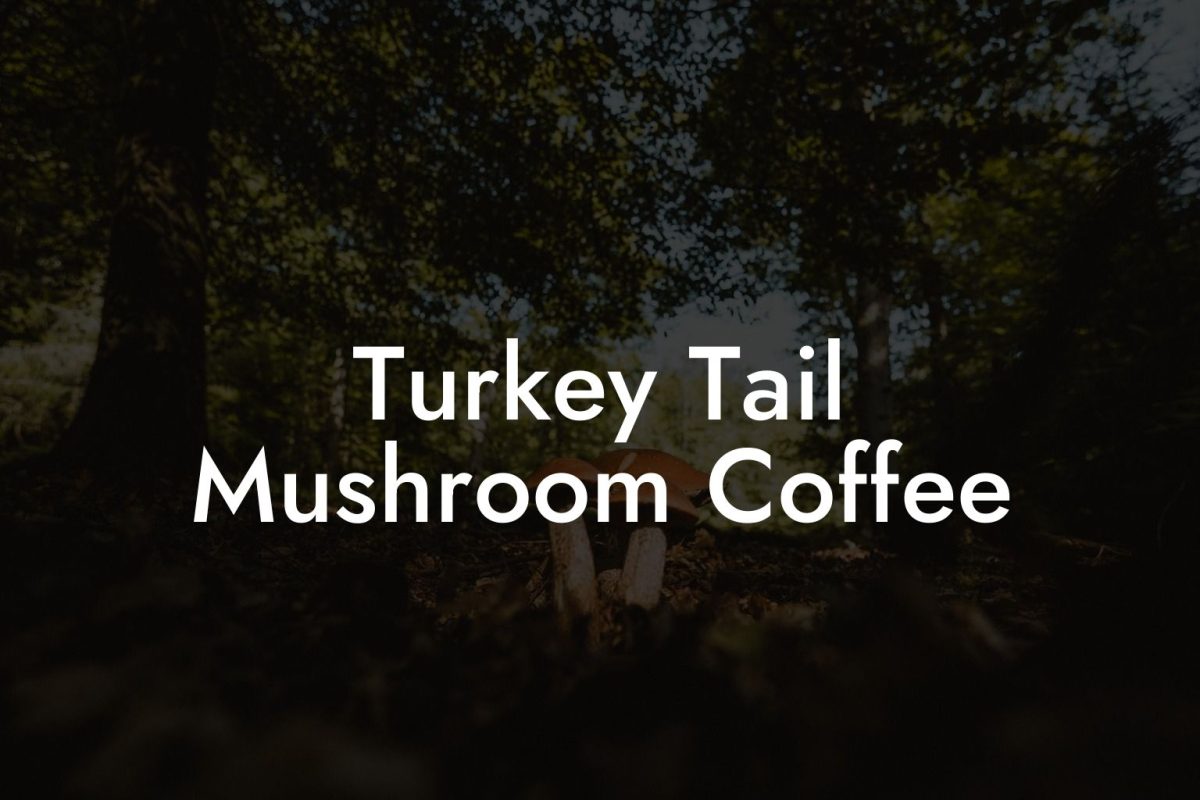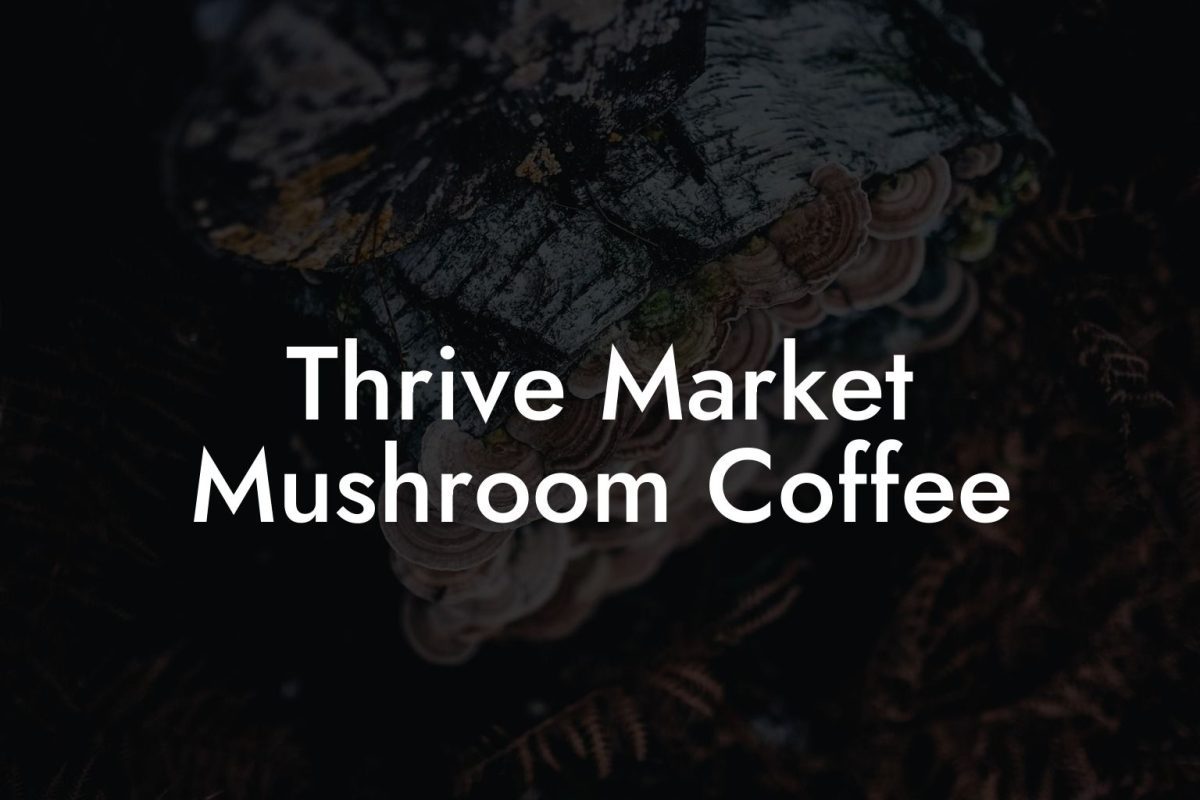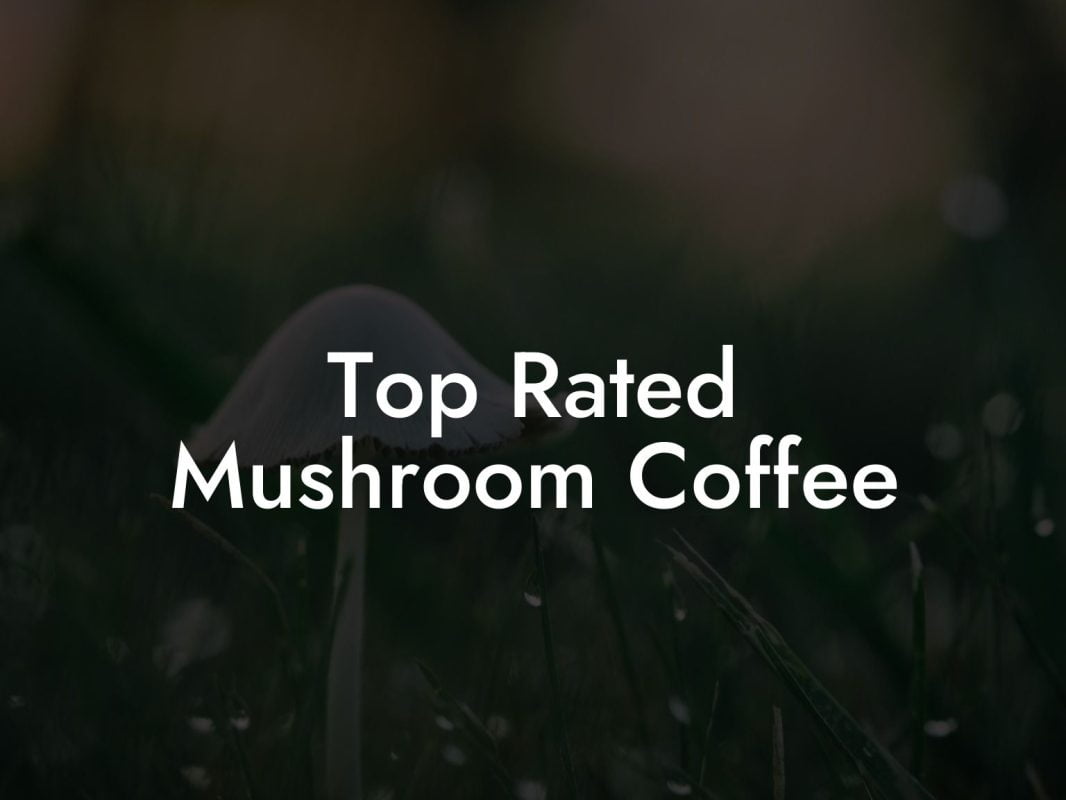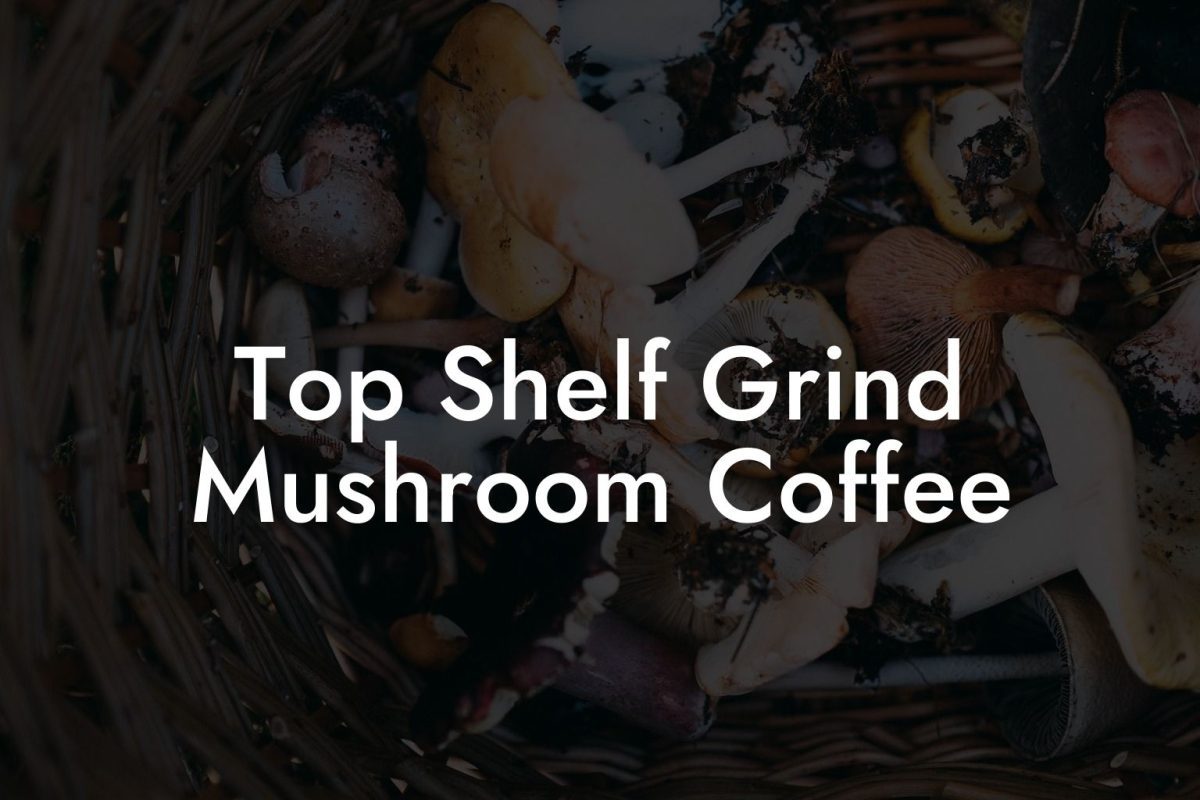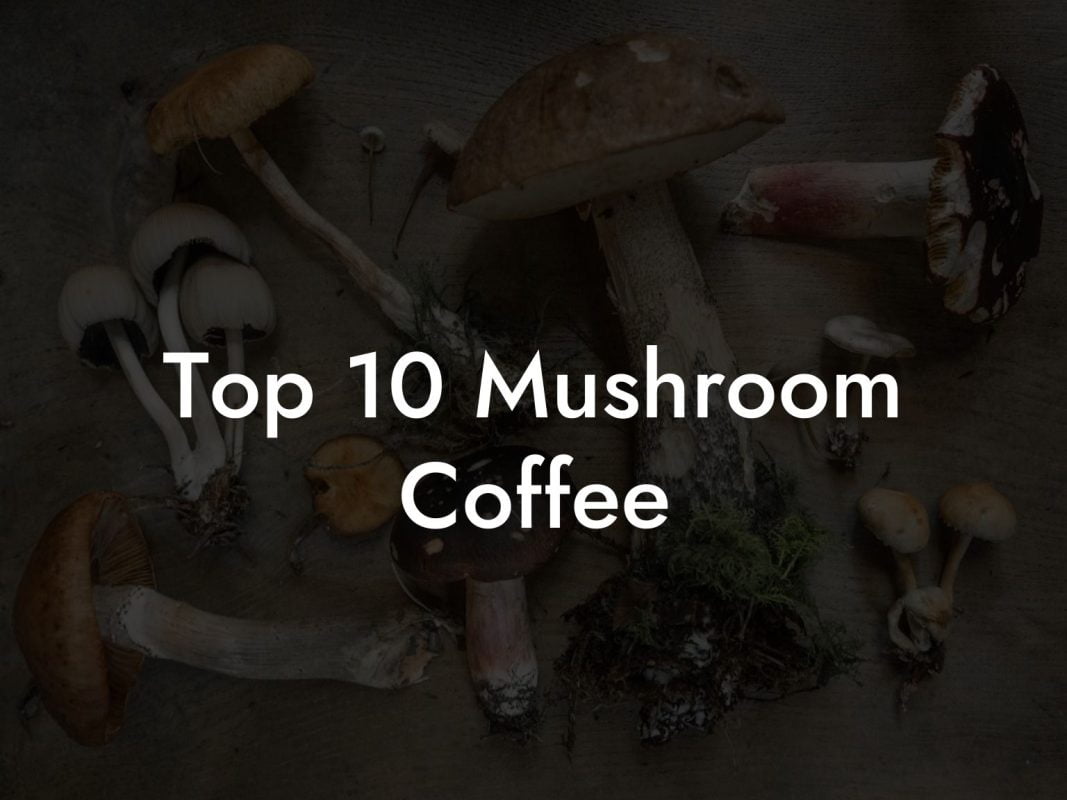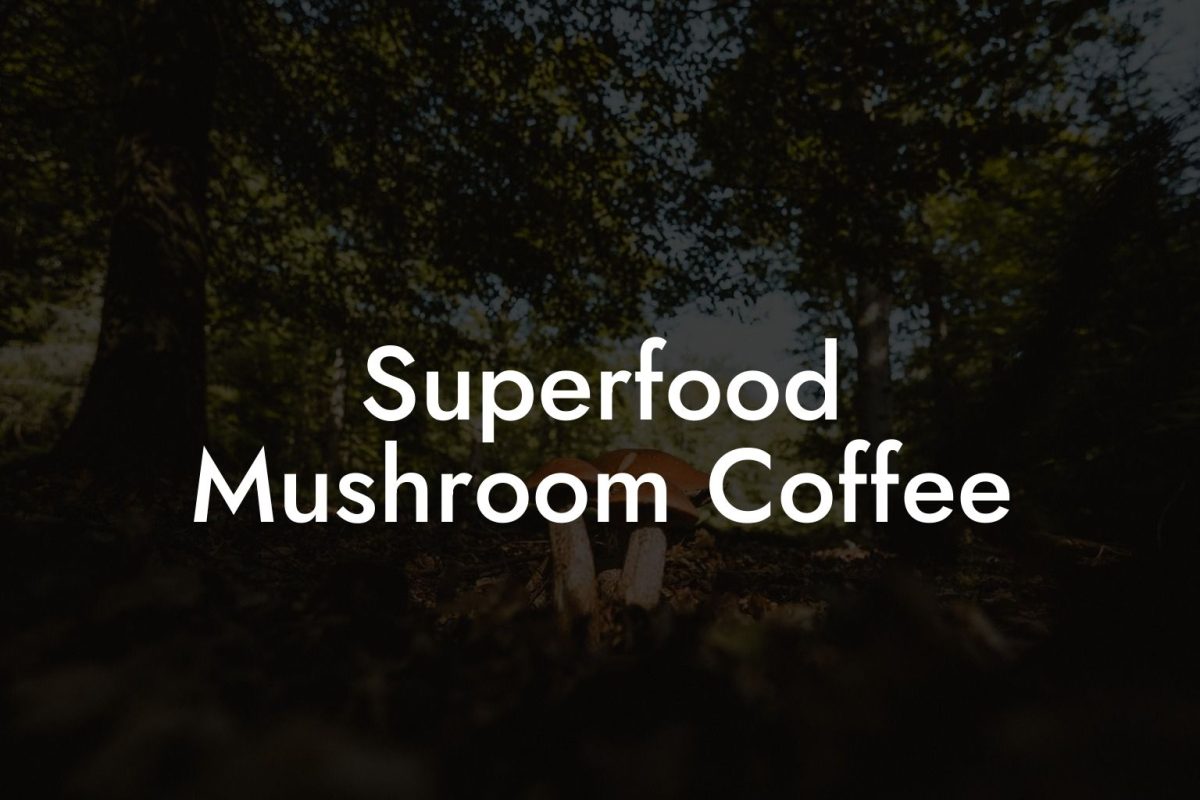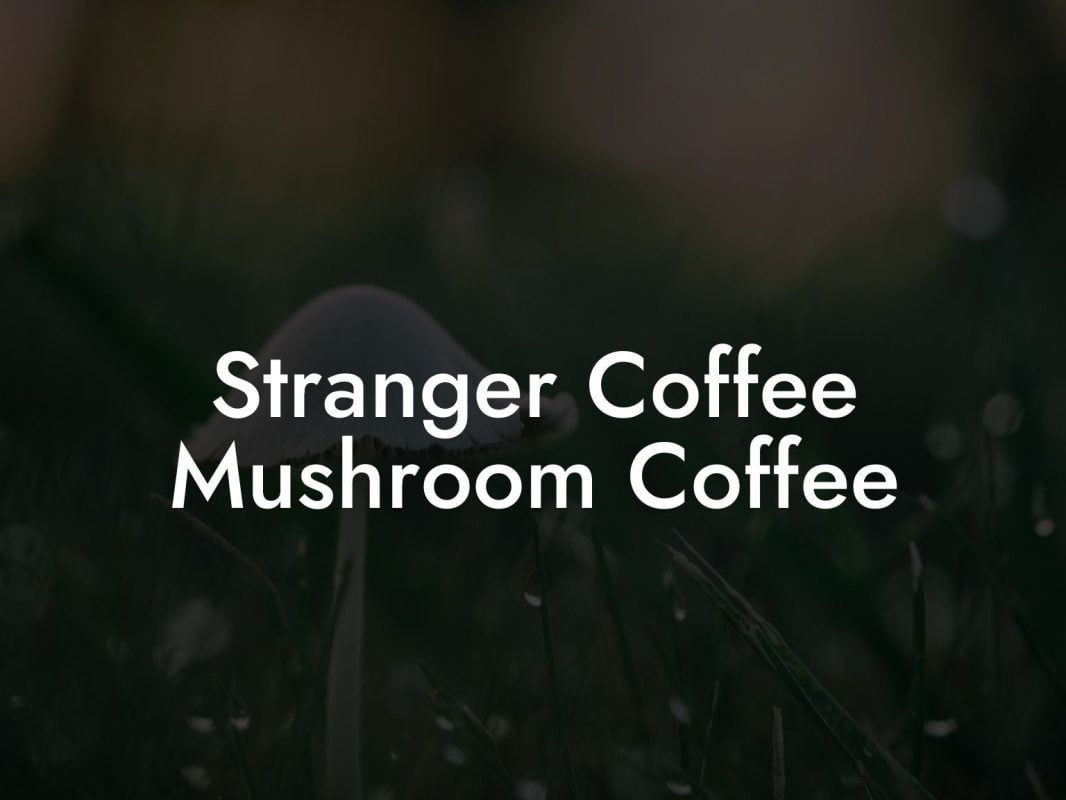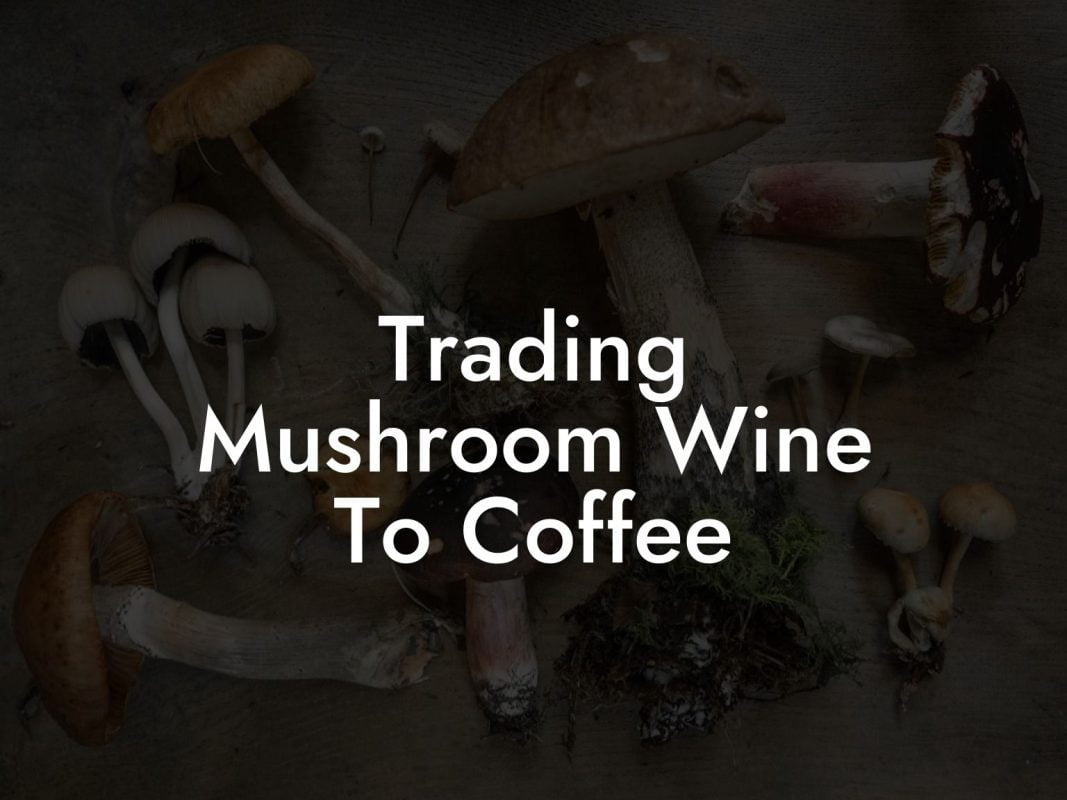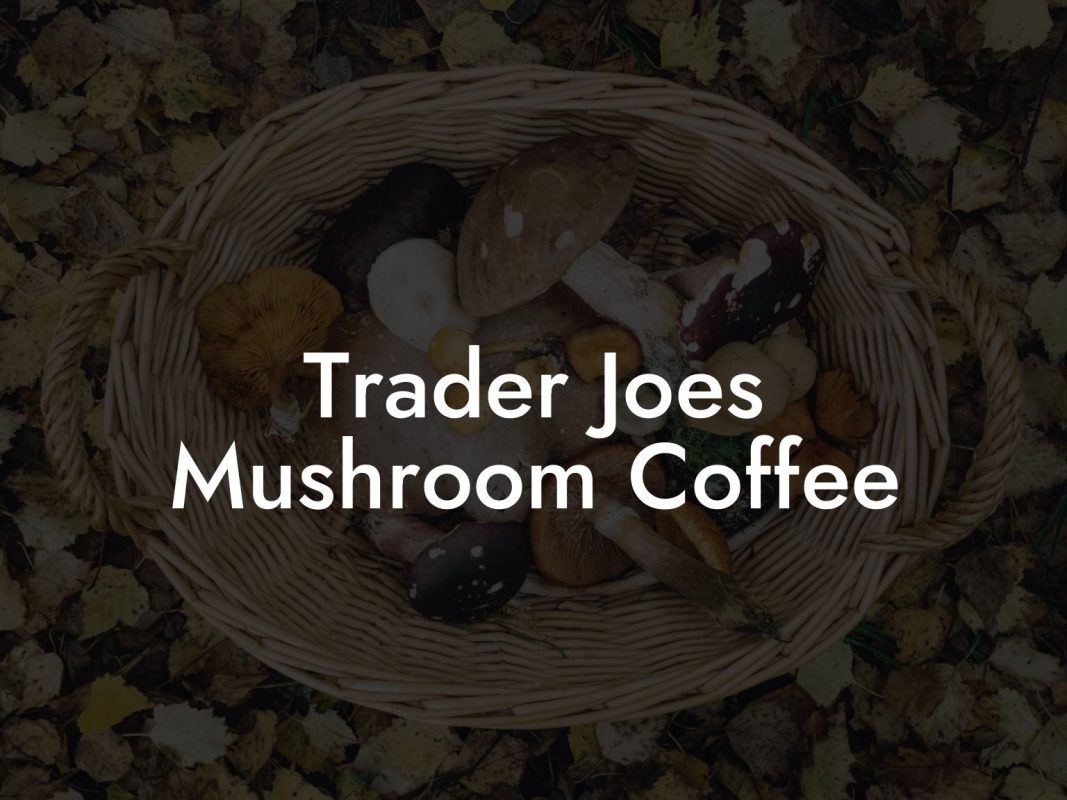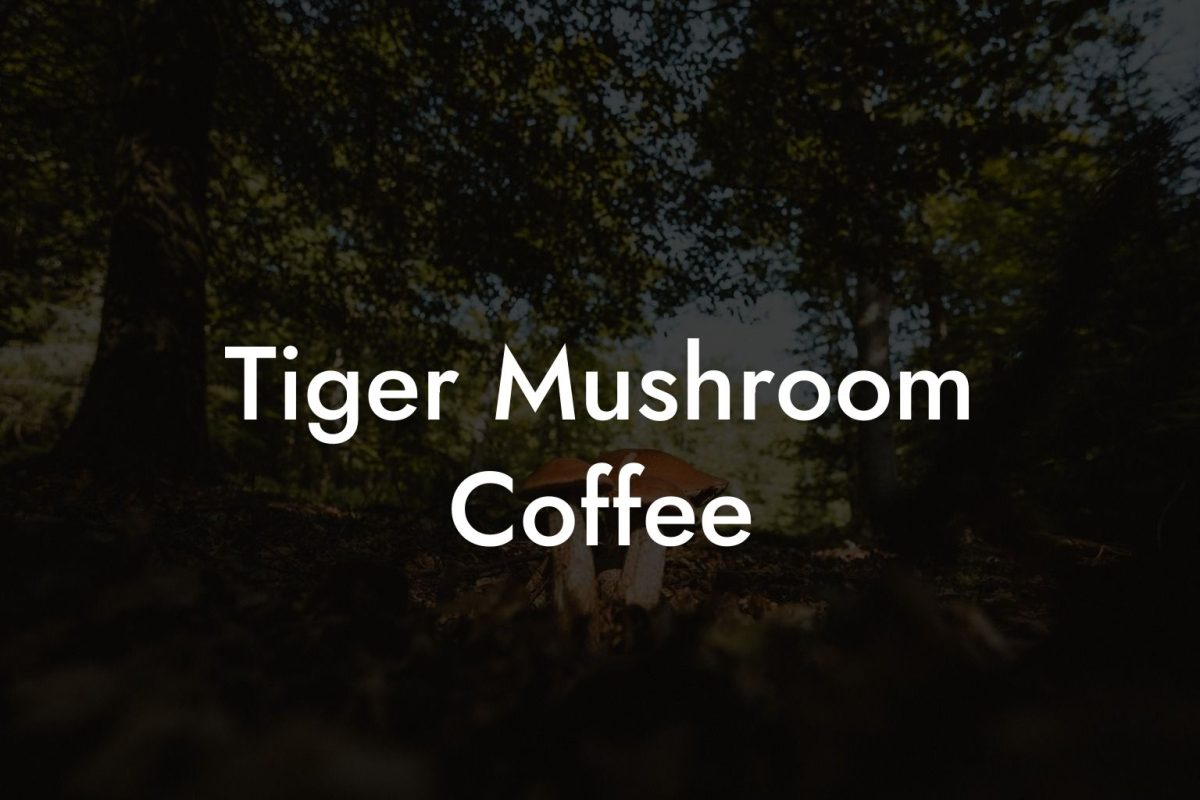Ever wondered what happens when nature’s recyclers meet your morning pick-me-up? Picture this: a supercharged blend of straw, coffee grounds, and mushrooms that not only redefines your daily brew but also champions sustainability and wellness. Welcome to the wild, innovative world of Straw And Coffee Ground Mushroom, a revolution that transforms everyday waste into an extraordinary, earthy delight. Whether you’re a Gen-Z trendsetter, an organic enthusiast, or simply someone looking to level up your coffee game, this guide will take you on a deep dive into cultivation hacks, health benefits, and eco-friendly living, all stirred with a dash of irreverent humor and unexpected magic.
Quick Links to Useful Sections
- The Unlikely Alliance: Straw, Coffee Grounds, and Mushrooms
- History and Science: Brewing a New Botanical Era
- Mushroom Coffee: A Brew Beyond the Ordinary
- How to Grow Mushrooms Using Straw and Coffee Grounds
- Step 1: Gathering Materials
- Step 2: Preparing the Substrate
- Step 3: Introducing the Spawn
- Step 4: Incubation and Colonization
- Step 5: Fruiting and Harvesting
- The Health and Nutritional Benefits of Mushroom Coffee and Fungi
- DIY Projects: Innovating with Straw, Coffee Grounds, and Mushrooms
- 1. Mushroom Terrariums and Decor
- 2. Upcycling for Your Urban Garden
- 3. Culinary Experiments: Mushroom Coffee Recipes
- Integrating Sustainability With Your Daily Brew
- Resources and Community Support: Your Next Steps
- Real-Life Stories: Tales from the Mushroom Frontier
- From Kitchen Waste to Gourmet Delight
- Urban Farming Reimagined
- The Healing Brew
- Scientific Innovations and Trends in Mushroom Cultivation
- Integrating Straw And Coffee Ground Mushroom Into Your Lifestyle
- Integrative FAQs on Straw And Coffee Ground Mushroom
- Embrace the Future: Your Next Steps in the Mushroom Revolution
- The Journey Continues: Connecting with the Community
The Unlikely Alliance: Straw, Coffee Grounds, and Mushrooms
At first glance, straw and used coffee grounds might seem like two waste products with little in common. But when paired with the natural magic of mushrooms, these humble ingredients create a partnership that’s as functional as it is fascinating. This potent trio serves as the foundation for a range of gourmet culinary experiences and innovative DIY projects that are turning heads, and brews, across the globe.
The secret lies in the nutritional properties and environmental benefits of repurposing straw and coffee grounds. Straw, rich in cellulose, provides a robust, natural substrate for mushroom growth, while coffee grounds, brimming with nitrogen and organic matter, deliver the extra kick of nutrients needed for robust mycelial expansion. The result? A flourishing ecosystem where mushrooms not only thrive but also infuse coffee with a complex, earthy flavor profile.
For those who love a little science with their caffeine, this synergy is proof that innovation can be as sustainable as it is delicious. Ready to dive deeper? Let’s break down what makes this triad so transformative.
History and Science: Brewing a New Botanical Era
The use of straw in agriculture dates back thousands of years, primarily as bedding or fodder, and later as a crucial component in composting systems. Coffee grounds, on the other hand, have long been considered a by-product with limited reuse potential. However, as sustainability took center stage in modern living, forward-thinking farmers and biohackers began to see these materials as untapped treasure troves for organic cultivation.
Looking For The Best Mushroom Coffee? You'll Love These:
Mushrooms, beloved for their umami flavor and robust nutritional profile, have been a staple in diets worldwide, prized for their medicinal properties and environmental benefits. They are natural decomposers, adept at breaking down organic material. When introduced to a mix of straw and coffee grounds, mushroom mycelium sees a feast of steady nutrients, making the growth process remarkably efficient and environmentally friendly.
Scientists have discovered that the combination provides an ideal balance of carbon and nitrogen, promoting vigorous mycelial growth. This balance is crucial; too much nitrogen or carbon can lead to stalled development or contamination. The inherent structure of straw provides aeration while coffee grounds offer moisture retention and a nutrient boost, creating a microenvironment reminiscent of a natural forest floor, rich, diverse, and teeming with life.
Today, research into eco-friendly cultivation methods demonstrates that utilizing food waste like coffee grounds can significantly reduce landfill contributions while enhancing the flavor and nutritional value of mushrooms. This closed-loop approach is a win-win for both the environment and your taste buds.
Mushroom Coffee: A Brew Beyond the Ordinary
If you thought your morning coffee couldn’t get any cooler, think again. Mushroom coffee is not just a fad; it’s a full-blown lifestyle trend capturing the hearts, and stomachs, of wellness enthusiasts across the globe. By merging the rich, bold flavors of traditional coffee with the earthy, robust nuances of mushrooms, enthusiasts have crafted an elixir that claims to boost immunity, sharpen focus, and even balance your energy levels.
What sets mushroom coffee apart from your average latte is its unique blend of adaptogenic mushrooms like lion’s mane, chaga, and reishi. These fungi are celebrated in Eastern medicine for centuries as natural remedies for stress, inflammation, and immune dysfunction. When incorporated into coffee or brewed as a standalone beverage, mushrooms offer a smooth, mildly nutty flavor with a hint of earthiness that perfectly complements the bittersweet notes of roasted coffee.
Modern mushroom coffee is more than just a drink, it’s a holistic ritual. Fans of this brew rave about increased mental clarity, reduced jitters, and an overall sense of balance. And, if you’re keen on sustainability, here’s another bonus: many mushroom coffee producers integrate recycled coffee grounds and straw in their growing process, ensuring that every cup you sip contributes to a healthier planet.
Whether you’re brewing a cup at home or grabbing one from your favorite eco-friendly café, mushroom coffee invites you to slow down and savor the complexities of flavor and health benefits. It’s a beverage that embodies the spirit of modern, mindful consumption.
How to Grow Mushrooms Using Straw and Coffee Grounds
Ready to roll up your sleeves and transform kitchen leftovers into gourmet mushrooms? Cultivating mushrooms on a mix of straw and coffee grounds is an accessible, eco-friendly hobby that’s perfect for urban junglers and tiny apartment dwellers alike. With a few basic supplies and a dash of patience, you can become your very own fungal farmer.
The method revolves around creating the ideal substrate, a nutrient-rich bed where mushroom mycelium can comfortably colonize and eventually sprout into the prized fruiting bodies. Here’s a step-by-step guide to getting started:
Step 1: Gathering Materials
You’ll need a few essential ingredients and tools: clean straw (wheat, rice, or barley straw works great), used coffee grounds (fresh from your morning brew), mushroom spawn (the mycelium starter kit available online or at specialty garden centers), and a container or growing bag with breathable vents. Pro tip: Avoid using overly chemical-treated straw or coffee grounds that have additives.
- Straw: Cut into small pieces to create more surface area for colonization.
- Coffee Grounds: Use fresh grounds for best results; sterilize if possible by simmering in water.
- Mushroom Spawn: Select a strain that thrives in café-cum-farm environments such as oyster mushrooms or shiitake.
- Growing Containers: Use breathable bags or pots to maintain proper air circulation.
Step 2: Preparing the Substrate
Combine the straw and coffee grounds in a large container. The typical ratio is about 70% straw to 30% coffee grounds. This balance provides both structural aeration and nutritional density. Moisten the mix with water until it’s damp but not soggy, think of a wrung-out sponge. This moisture level is key to encouraging mycelium growth without inviting competing bacteria.
Next, pasteurize the substrate by heating it to around 160°F (70°C) for an hour. This step reduces potential contaminants while keeping the beneficial nutrients intact. Once cooled, spread the mixture evenly in your chosen container.
Step 3: Introducing the Spawn
Gently mix the mushroom spawn into your substrate. Your hands are the perfect tool for this task, wear gloves if you feel extra fancy or hygienic. Distribute the spawn thoroughly to ensure that the mycelium can colonize evenly throughout the substrate. Seal the container or bag loosely to allow for airflow, which is critical for fungal development.
Step 4: Incubation and Colonization
Place your inoculated substrate in a dark, warm area (around 70°F to 75°F) for 2-3 weeks. During this incubation period, the mycelium will weave its way through the substrate, rapidly colonizing the material. You might notice white, thread-like structures spreading through your mix, this is the mycelium establishing its territory.
Keep an eye out for any signs of contamination, such as unusual colors or unpleasant smells. If everything looks good, you’re ready for the next stage.
Step 5: Fruiting and Harvesting
Once your substrate is fully colonized, move it to a place with indirect sunlight and increased ventilation. Lower the temperature slightly (around 65°F to 70°F) and maintain high humidity by misting the area a couple of times a day. Within a week or two, little pins, tiny knots of developing mushrooms, will start to appear. This is the exciting phase where your hard work begins to pay off.
Harvest your mushrooms when they’ve reached the desired size. Use a sharp knife or gently twist them off by hand, taking care not to disturb the surrounding mycelium. Enjoy your bounty in culinary creations ranging from gourmet salads to robust mushroom coffee blends!
Growing mushrooms with straw and coffee grounds is not just an environmentally conscious practice, it’s also a fun, rewarding experiment that links you to the natural cycles of life, waste, and renewal. Embrace your inner fungal farmer and join a vibrant community of eco-hackers redefining how we see everyday leftovers.
The Health and Nutritional Benefits of Mushroom Coffee and Fungi
Beyond the cool factor of transforming waste into a gourmet treat lies a treasure trove of health benefits. Mushroom coffee packs a nutritional punch that goes well beyond the typical caffeine fix. Combining the antioxidants, vitamins, and minerals of coffee with the medicinal properties of mushrooms creates a drink that’s as beneficial as it is delicious.
Here are some of the healthiest perks of incorporating mushroom-infused coffee into your routine:
- Energy Without the Crash: The adaptogenic properties of mushrooms help modulate stress, leading to a more balanced energy boost than conventional coffee.
- Immune Support: Varieties like reishi and chaga are renowned for their immune-enhancing properties, aiding in fighting infections and maintaining overall health.
- Rich in Antioxidants: Both coffee and mushrooms are rich in antioxidants, critical for neutralizing free radicals and reducing inflammation.
- Cognitive Clarity: Lion’s mane mushroom is particularly famous for supporting brain function, improving focus, and even promoting nerve regeneration.
- Gut Health: Mushrooms contain prebiotics that nurture the beneficial bacteria in your digestive system, contributing to overall gut wellness.
Incorporating mushroom coffee as part of your daily ritual is like giving your body a natural multivitamin with a kick. It’s a flavorful, nutrient-dense alternative that not only wakes you up but also keeps you balanced throughout the day.
Whether you’re a coffee aficionado or a health-conscious millennial, the dynamic duo of mushrooms and coffee harnesses the best of both worlds, taste and wellness meld together in each invigorating sip.
DIY Projects: Innovating with Straw, Coffee Grounds, and Mushrooms
If you’re the kind of person who’s always on the lookout for a cool DIY project, look no further. Beyond its culinary uses, the process of growing mushrooms with straw and coffee grounds has inspired a variety of creative projects, blending sustainability with art, science, and community.
Consider turning your cultivation process into a conversation starter at your next gathering. Here are a few ideas to spark your creativity:
1. Mushroom Terrariums and Decor
Why not create a living piece of art? Use clear containers or repurposed jars to build mini terrariums that double as mushroom growing kits. Not only do they add a touch of greenery to your space, but they also provide a fascinating educational tool for your friends. Imagine hosting a “Myco Party” where everyone gets to watch tiny mushrooms bloom in real time!
2. Upcycling for Your Urban Garden
Got extra coffee grounds and straw piling up? Repurpose them as high-quality compost for your vegetables or herbs. Mushrooms break down organic waste in a unique way, enriching the soil with nutrients that promote plant growth. Your urban garden will thank you for the eco-friendly boost.
3. Culinary Experiments: Mushroom Coffee Recipes
Biosynthesizing a gourmet beverage can be as experimental as crafting a custom cocktail. Blend your mushroom-infused coffee with spices like cinnamon, turmeric, or cacao for a twist on your morning brew. Experiment with various adaptogenic strains to develop your signature flavor, each cup a masterpiece that redefines your coffee ritual.
These DIY projects highlight how straw, coffee grounds, and mushrooms are not merely ingredients, they’re mediums for creative expression, sustainability, and community engagement. Whether you’re into urban gardening, eco-crafting, or experimental cooking, this innovative approach offers a playground for your imagination.
Integrating Sustainability With Your Daily Brew
In a world where sustainability is more than a buzzword, adopting practices that reduce waste and promote eco-friendly living is a must. The concept behind Straw And Coffee Ground Mushroom is a celebration of resourcefulness, transforming what many consider trash into a valuable, life-enhancing product. Every cup of mushroom coffee you sip can be a vote for reducing landfill waste and supporting nature’s cycles.
Here’s why this method stands out:
- Waste Not, Want Not: By repurposing straw and coffee grounds, you help reduce agricultural and domestic waste, contributing to a cleaner environment.
- Low Carbon Footprint: The cultivation process harnesses natural materials, requiring minimal energy compared to conventional agricultural practices.
- Closed-Loop Systems: It’s an example of how nature’s recycling process can be mirrored in our daily routines, reducing waste while nourishing our bodies.
- Community Empowerment: Sharing DIY mushroom cultivation tips can foster local groups and online communities centered on sustainability and self-sufficiency.
The integration of these sustainable practices with your daily brew not only delivers a healthier drink but also contributes to environmental conservation. It’s about making small choices that ripple out into broader positive changes for our communities and our planet.
Resources and Community Support: Your Next Steps
Ready to jump on the mushroom bandwagon? There’s a vibrant ecosystem of resources, communities, and support networks ready to help you on your journey. From online forums and local workshops to eco-friendly businesses specializing in mushroom cultivation kits, you have a wealth of information at your fingertips.
Here are some actionable steps to get you started:
- Online Communities: Check out platforms like Reddit’s r/MushroomGrowing or Facebook groups dedicated to sustainable cultivation. These spaces are gold mines for firsthand tips, success stories, and troubleshooting advice.
- DIY Kits & Workshops: Many local farmers’ markets and community centers are hosting workshops on mushroom cultivation. Look online for DIY kits that simplify the process and connect you with experts in the field.
- Books & Blogs: Dive into literature on sustainable agriculture and mycology to deepen your understanding. Blogs from eco-conscious chefs and biohackers often feature creative recipes and cultivation hacks.
- Sustainable Living Apps: Utilize apps that track your eco-friendly projects, from composting to urban gardening. These digital tools can help you stay organized and motivated.
- Local Networks: Explore local environmental organizations or community gardens that promote organic waste recycling. Partnering with like-minded individuals can amplify your impact.
Each resource and community you tap into not only broadens your knowledge but also reinforces the idea that sustainable living is a collaborative adventure. Embrace the journey, share your progress, and help the movement grow, one mushroom at a time.
Real-Life Stories: Tales from the Mushroom Frontier
Nothing inspires quite like hearing real-life transformations. Across the world, innovators and everyday eco-warriors are turning their coffee waste and straw into thriving mushroom farms, creating a ripple effect of sustainability and creativity. Here are some stories to fuel your passion:
From Kitchen Waste to Gourmet Delight
Meet Sarah, a young chef in a bustling city who turned her overflowing coffee grounds into the secret ingredient for her signature mushroom coffee latte. With a DIY setup in her tiny apartment, Sarah crafted batches of organic mushrooms that not only boosted her culinary repertoire but also cut down her monthly waste dramatically. Her innovative approach caught the eye of local cafés, leading to collaborations that promoted zero-waste living.
Urban Farming Reimagined
In a thriving urban neighborhood, a community center repurposed its discarded straw and coffee remnants into an impressive mushroom garden. This initiative brought together residents from all walks of life, school kids, retirees, and young professionals, all united by a shared passion for sustainable living. Today, the project has blossomed into a community-supported agriculture (CSA) model, with regular workshops and a monthly harvest festival that celebrates nature’s bounty.
The Healing Brew
Then there’s Leo, a hustling entrepreneur who discovered that his daily mushroom coffee not only fueled his chaotic mornings but also stabilized his mood during long workdays. After integrating his favorite adaptogenic mushrooms into his brew, Leo found his focus sharpen and his energy levels even out. What started as a quirky experiment soon transformed into a full-blown lifestyle change, inspiring him to launch his own eco-friendly mushroom coffee startup.
These inspiring journeys show that the magic of straw and coffee ground mushrooms is not just about environmental impact, it’s about reimagining life, one sustainable sip at a time.
Scientific Innovations and Trends in Mushroom Cultivation
The intersection of technology, sustainability, and food production is fueling a new wave of innovation in mushroom cultivation. Researchers and biohackers alike are exploring advanced techniques to optimize growth, boost nutritional content, and further reduce waste. Here are a few cutting-edge trends that are making waves:
- Smart Bioreactors: These innovative systems monitor environmental conditions in real-time, automatically adjusting humidity, temperature, and light to create the perfect setting for mushroom growth.
- Data-Driven Cultivation: Using sensor data and AI algorithms, enthusiasts can now predict growth cycles, optimize substrate mixes, and prevent contamination, taking the guesswork out of mushroom farming.
- Enhanced Substrate Mixes: New research into substrate formulations has led to blends that maximize nutrient efficiency, mixing organic waste with natural additives for even more robust mycelial growth.
- Consumer-Friendly Innovation: Companies are crafting sleek, space-saving mushroom growing kits designed specifically for urban dwellers, making sustainable cultivation accessible to everyone regardless of living space.
These scientific innovations underscore the potential for sustainability to merge with technology, paving the way for future-forward, eco-friendly food production systems. Whether you’re a tech enthusiast or a traditionalist, these trends highlight that the future of food is here, and it’s growing right before our eyes.
Integrating Straw And Coffee Ground Mushroom Into Your Lifestyle
At its core, the Straw And Coffee Ground Mushroom movement is about rethinking waste, transforming everyday habits, and embracing a lifestyle that prioritizes sustainability, creativity, and wellness. It’s not merely a method of cultivation; it’s a mindset shift that harmonizes nature with modern living.
Here are some practical tips to integrate this holistic approach into your daily routine:
- Experiment in Your Kitchen: Start small by trying a DIY mushroom coffee recipe. Use your leftover coffee grounds to inoculate a little batch of mushrooms and see how the process unfolds in your own kitchen.
- Embrace the Eco-Vibes: Choose sustainable products in your daily life. Look for local cafés and shops that support zero-waste initiatives, and get involved in community-based recycling projects.
- Share Your Journey: Document your experiments on social media. Whether it’s a time-lapse video of your mushroom growth or a creative mushroom coffee recipe post, let your journey inspire others to explore sustainable alternatives.
- Educate Yourself: Read up on the latest research and trends in sustainable agriculture and mycology. The more you know, the more you can innovate and share that knowledge with your community.
- Connect and Collaborate: Join online forums, attend local workshops, or participate in sustainability events. These connections not only enrich your skill set but also build a supportive network of like-minded individuals.
Every small step counts, each DIY project, every innovative idea, and every shared success story contributes to a larger movement of environmental stewardship and mindful consumption.
Integrative FAQs on Straw And Coffee Ground Mushroom
Below are some frequently asked questions about the fascinating world of Straw And Coffee Ground Mushroom. Whether you’re a curious beginner or a seasoned cultivator, these answers are here to help.
1. What exactly is Straw And Coffee Ground Mushroom?
It’s a sustainable method of cultivating mushrooms using a substrate made primarily from straw and recycled coffee grounds. The combination provides an ideal balance of nutrients and structure for robust mycelial growth.
2. How do coffee grounds benefit mushroom growth?
Coffee grounds are rich in nitrogen and organic matter, which supply essential nutrients that boost the growth and vitality of the mushroom mycelium.
3. Can I use any type of straw for cultivation?
Most types of straw, such as wheat, rice, or barley, work well as long as they’re clean and free from pesticides or chemicals.
4. Is mushroom coffee really good for your health?
Yes! Mushroom coffee blends the antioxidants and nutritional benefits of both coffee and medicinal mushrooms, providing balanced energy, immune support, and cognitive clarity.
5. How long does it take to grow mushrooms using this method?
The entire process from inoculation to fruiting typically takes around 4 to 6 weeks, depending on environmental conditions and the specific mushroom variety.
6. What tools or materials are essential for this DIY process?
You’ll need straw, used coffee grounds, mushroom spawn of your choice, a container or growing bag, and some basic tools like a mixing container and a spray bottle for misting.
7. Can I harvest the coffee grounds after using them for mushroom cultivation?
While the primary focus is on growing mushrooms, the spent substrate can be used as a nutrient-rich compost for your other plants.
8. Are there any safety precautions I should take during cultivation?
Always work in a clean environment, wear gloves and a mask if needed, and follow proper pasteurization methods to minimize contamination.
9. Where can I buy mushroom spawn or DIY kits?
Mushroom spawn and DIY cultivation kits are widely available online on specialty sites, local garden centers, and eco-friendly marketplaces.
10. What impact does this method have on the environment?
By repurposing waste and reducing reliance on chemical fertilizers, cultivating mushrooms from straw and coffee grounds supports a low-carbon, sustainable approach to agriculture.
Embrace the Future: Your Next Steps in the Mushroom Revolution
The journey into the world of Straw And Coffee Ground Mushroom is more than just a foray into sustainable cultivation, it’s an invitation to reimagine your relationship with everyday waste and transform it into something spectacular. Every step you take, from careful substrate preparation to savoring a cup of mushroom-infused coffee, is a stride toward a more eco-conscious, innovative lifestyle.
Embracing this fusion of nature and innovation means you’re not just consuming; you’re participating in a broader movement that values health, sustainability, and creativity. Whether you’re a student, a young professional, or a seasoned eco-warrior, the insights and techniques described here offer a pathway to healthier living and a cleaner planet.
So, what are your next steps? Start by setting up a simple mushroom growing kit at home. Experiment with different coffee blends and mushroom strains. Share your successes, and even your occasional failures, with online communities, local groups, and social networks. Your journey might spark new ideas, collaborations, and perhaps even a revolution in sustainable brewing.
Remember, every sip of your mushroom coffee is a celebration of innovation, a nod to nature, and a commitment to a greener future. Embrace the challenge, enjoy the process, and become part of a transformative movement that’s brewing one eco-friendly, flavorful cup at a time.
The Journey Continues: Connecting with the Community
The Straw And Coffee Ground Mushroom movement is as much about community as it is about technology and sustainability. There is a growing network of enthusiasts, experts, and eco-innovators committed to pushing the boundaries of what’s possible with natural resources. Engage with local workshops, share your experiments on social media, and join online forums where ideas bloom as vividly as your mushroom harvest.
Let your journey be an ever-evolving exploration of flavor, function, and environmental stewardship. With every experiment, every conversation, and every innovative spark, you contribute to a green revolution that redefines waste as wonder.
The future of food and sustainable living is blossoming right before our eyes. Now is the time to take action, share your discoveries, and inspire change in your corner of the world. The path is clear, the tools are in your hands, and your adventure into the heart of sustainable innovation awaits.
Looking For The Best Mushroom Coffee? You'll Love These:
Useful Interruption: Dive deeper into the world of Mushroom Coffee with our most popular sections. If there is anything you think is missing or anything you would love for us to write about, just give us a shout.
- Mushroom Coffee Equipment & Product Reviews
- Mushroom Coffee Recipes & Creative Variations
- Mushroom Coffee Guides & Troubleshooting
- Mushroom Coffee Brewing & Preparation Techniques
- Model Rocket Advanced Rocketry & Innovations
- Mushroom Coffee Fundamentals
- Model Rocket Equipment Reviews & Digital Tools
- Mushroom Coffee Health Benefits & Wellness
- Mushroom Coffee Mycology & Scientific Insights
- Mushroom Coffee Community, Lifestyle & Engagement
I tried mushroom coffee this morning and told my friend, "This brew is spore-tacular!" He shot back, "Guess that's why it's such a cap-tivating way to kickstart your day!"

